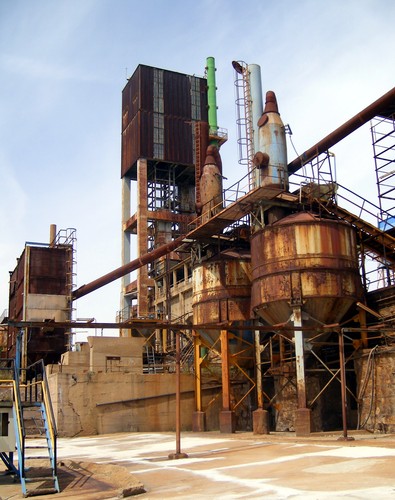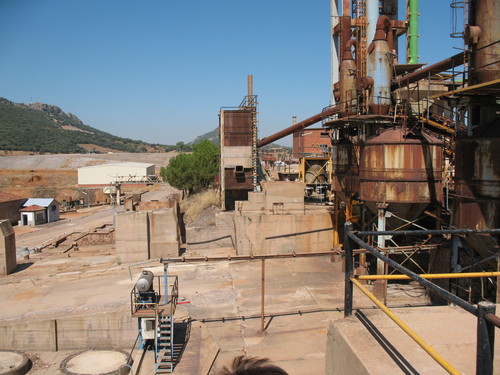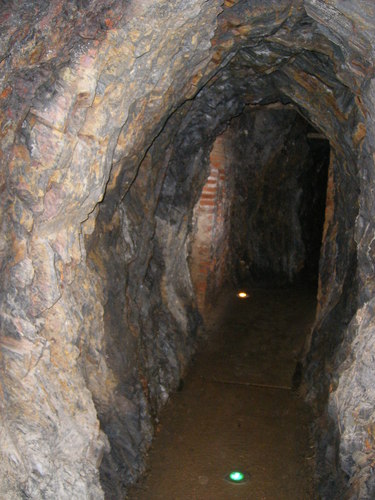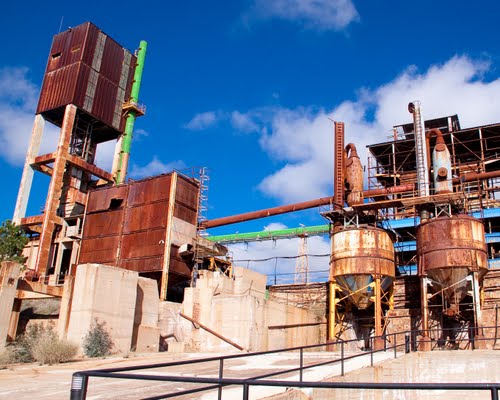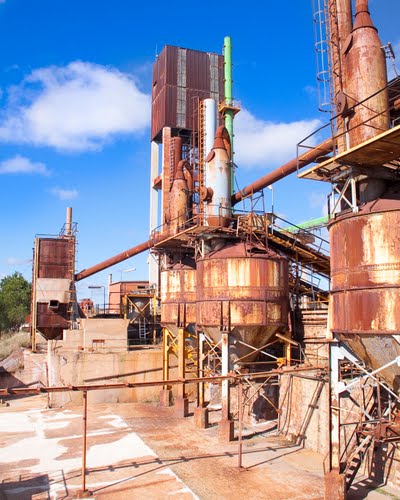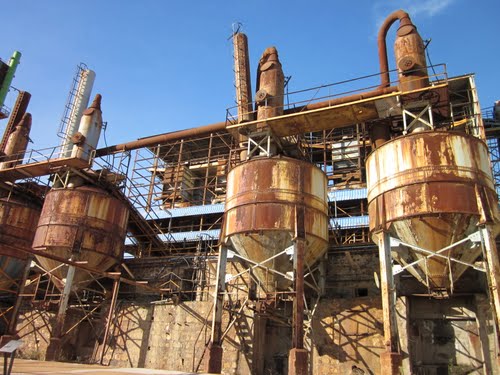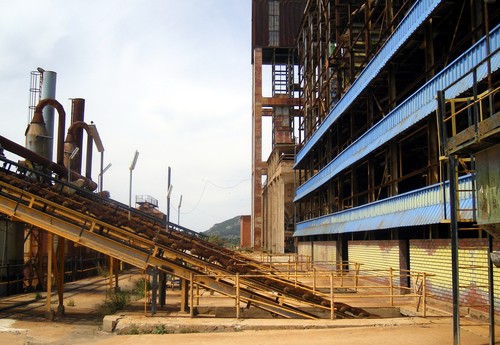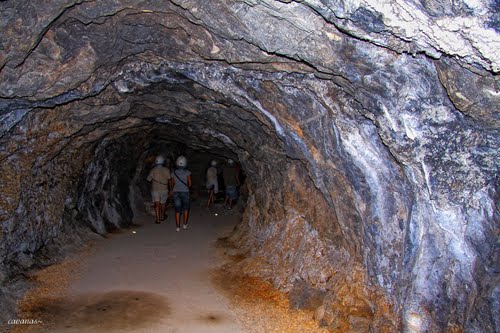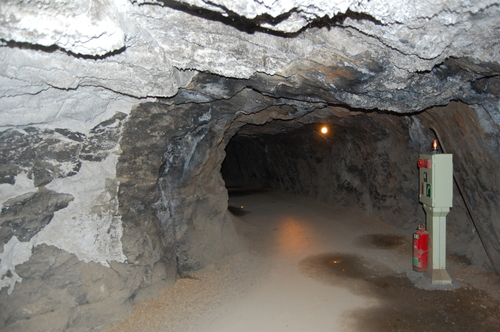The geology of the area is characterised by volcanism. Almaden is home to the world's greatest reserves of cinnabar, a mineral associated with recent volcanic activity, from which mercury is extracted. Cinnabar was first used for pigment by the Romans. Later, the mineral was used mostly in medicine and alchemy during the Arab domination of Spain.
The Fuggers of Augsburg, two German bankers, administered the mines during the 16th and 17th centuries in return for loans to the Spanish government. Mercury became very valuable in the Americas in the mid 16th century due to the introduction of amalgamation, a process that uses mercury to extract the metals from gold and silver ore. The demand for mercury grew, and so did the town's importance as a center of mining and industry. Most of the mercury produced at this time was sent to Seville, then to the Americas.
The dangerous working conditions of the mines made it difficult for the Fuggers to find willing laborers. As the demand for mercury grew, the idea of convict labor was introduced.
Introduction of convict labor in mine
After the Fuggers failed to meet production quotas in 1566, the King of Spain agreed to send 30 prisoners to serve their sentences as laborers at Almaden. The number was increased to 40 in 1583. The prisoners, known as forzados, were selected out of criminals waiting for transport to the galleys in the jail of Toledo. Those selected usually had limited sentences and good physical abilities. Murderers and capital criminals were rarely selected, as the galleys were considered a far harsher punishment than the mines of Almaden.
The first group of forzados arrived at Almadén at the end of February 1566.
Daily life at Almaden
A steady run of complaints to the king in the 1580s led to an investigation of convict living conditions at Almaden in 1593. The investigation was conducted by royal commissioner and famous author Mateo Aleman, and was based largely on convict interviews.
The mine at Almaden provided forzados with acceptable living conditions. Each convict received daily rations of meat, bread, and wine. Each year, a forzado was issued a doublet, one pair of breeches, stockings, two shirts, one pairs of shoes, and a hood. Medical care was available at the infirmary, and the mine even housed its own apothecary.
Despite these good offerings, the danger of death or sickness from mercury poisoning was always present. 24% of convicts at Almaden between 1566 and 1593 died before their release dates, most often because of mercury poisoning. Nearly all prisoners experienced discomfort due to mercury exposure. Common symptoms included severe pains in any part of the body, trembling limbs, and loss of sanity. Most of the men at the furnaces died from poisoning.
Forzados were also forced to bail water out of the mines. These men escaped the dangers of mercury exposure, but suffered exhaustion on a daily basis. A group of four men had to bail out 300 buckets of water without rest. Those that could not meet this quota were whipped. Sick prisoners were not exempt from this practice.
Death was common, and the convicts wished to provide a proper burial for each of the men that died at the mine. A religious confraternity was formed, conducted by a prior who was administrator of the mine for the Fuggers. The prior also chose devout convicts to serve as officials. Mass was held on Sundays and feast days, and non-attendance was punishable by fine.
1645 to present
In 1645, the Fugger concession was cancelled and the mines were taken over by the state, to be managed by the royal government. All capital criminals were to be sent to Almadén by court order in 1749, but the mine simply could not accommodate all of them. The act was cancelled in 1751.
Two disastrous fires occurred in 1775 that were blamed on the forzados.
Safer mining technology was introduced in the last quarter of the 18th century, and free laborers began to take interest in the mine again. By the end of the century, free workers had replaced most of the slave labor. The penal establishment at Almadén was closed in 1801.
In 1835, during the First Carlist War, the mine was leased indefinitely to the Rothschild Bank. The price paid was high, but one of the Rothschild family firms had previously purchased the quicksilver mine in Idrija (now in Slovenia) from Austria, thus the firm had a monopoly on quicksilver. Volume was expanded and the metal sold at a substantial markup returning a substantial profit to both Spain and the firm. Spain reclaimed the mine in 1863.
In 1916, a special council was created to operate the mines, introducing new technology and safety improvements. A record production of 82,000 mercury flasks was reached in 1941, just after the Spanish Civil War. In 1981, the Spanish government created the company Minas de Almadén y Arrayanes to operate the mine. In 2000, the mines closed due to the fall of the price of mercury in the international market, caused by falling demand. However, Almaden still has one of the world's largest mercury resources. A museum has been built, including visit to the mines.

